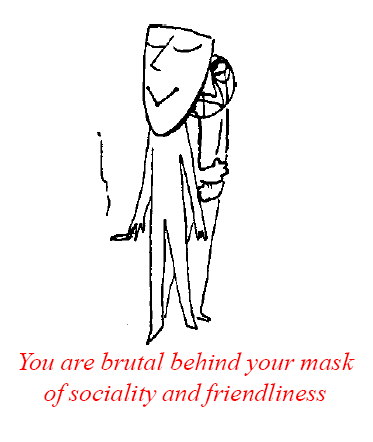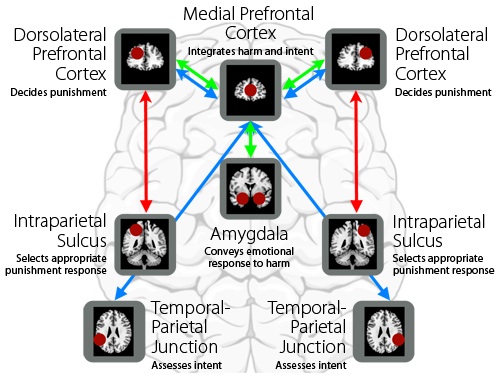 zerohedge |
zerohedge | What the ascendancy of sociopaths means isn't an academic question. Throughout history, the question has been a matter of life and death. That's one reason America grew; every American (or any ex-colonial) has forebears who confronted the issue and decided to uproot themselves to go somewhere with better prospects. The losers were those who delayed thinking about the question until the last minute.
I have often described myself, and those I prefer to associate with, as gamma rats. You may recall the ethologist's characterization of the social interaction of rats as being between a few alpha rats and many beta rats, the alpha rats being dominant and the beta rats submissive. In addition, a small percentage are gamma rats that stake out prime territory and mates, like the alphas, but are not interested in dominating the betas. The people most inclined to leave for the wide world outside and seek fortune elsewhere are typically gamma personalities.
You may be thinking that what happened in places like Nazi Germany, the Soviet Union, Mao's China, Pol Pot's Cambodia and scores of other countries in recent history could not, for some reason, happen in the US. Actually, there's no reason it won't at this point. All the institutions that made America exceptional – including a belief in capitalism, individualism, self-reliance and the restraints of the Constitution – are now only historical artifacts.
On the other hand, the distribution of sociopaths is completely uniform across both space and time. Per capita, there were no more evil people in Stalin's Russia, Hitler's Germany, Mao's China, Amin's Uganda, Ceausescu's Romania or Pol Pot's Cambodia than there are today in the US. All you need is favorable conditions for them to bloom, much as mushrooms do after a rainstorm.
Conditions for them in the US are becoming quite favorable. Have you ever wondered where the 50,000 people employed by the TSA to inspect and degrade you came from? Most of them are middle-aged. Did they have jobs before they started doing something that any normal person would consider demeaning? Most did, but they were attracted to – not repelled by – a job where they wear a costume and abuse their fellow citizens all day.
Few of them can imagine that they're shepherding in a police state as they play their roles in security theater. (A reinforced door on the pilots' cabin is probably all that's actually needed, although the most effective solution would be to hold each airline responsible for its own security and for the harm done if it fails to protect passengers and third parties.) But the 50,000 newly employed are exactly the same type of people who joined the Gestapo – eager to help in the project of controlling everyone. Nobody was drafted into the Gestapo.
What's going on here is an instance of Pareto's Law. That's the 80-20 rule that tells us, for example, that 80% of your sales come from 20% of your salesmen or that 20% of the population are responsible for 80% of the crime.
As I see it, 80% of people are basically decent; their basic instincts are to live by the Boy Scout virtues. 20% of people, however, are what you might call potential trouble sources, inclined toward doing the wrong thing when the opportunity presents itself. They might now be shoe clerks, mailmen or waitresses – they seem perfectly benign in normal times. They play baseball on weekends and pet the family dog. However, given the chance, they will sign up for the Gestapo, the Stasi, the KGB, the TSA, Homeland Security or whatever. Many are well intentioned but likely to favor force as the solution to any problem.
But it doesn't end there, because 20% of that 20% are really bad actors. They are drawn to government and other positions where they can work their will on other people and, because they're enthusiastic about government, they rise to leadership positions. They remake the culture of the organizations they run in their own image. Gradually, non-sociopaths can no longer stand being there. They leave. Soon the whole barrel is full of bad apples. That's what's happening today in the US.
It's a pity that Bush, when he was in office, made such a big deal of evil. He discredited the concept. He made Boobus americanus think it only existed in a distant axis, in places like North Korea, Iraq and Iran – which were and still are irrelevant backwaters and arbitrarily chosen enemies. Bush trivialized the concept of evil and made it seem banal because he was such a fool. All the while real evil, very immediate and powerful, was growing right around him, and he lacked the awareness to see he was fertilizing it by turning the US into a national security state after 9/11.
Now, I believe, it's out of control. The US is already in a truly major depression and on the edge of financial chaos and a currency meltdown. The sociopaths in government will react by redoubling the pace toward a police state domestically and starting a major war abroad. To me, this is completely predictable. It's what sociopaths do.
There are seven characteristics I can think of that define a sociopath, although I'm sure the list could be extended.
The fact that they're chronic, extremely convincing and even enthusiastic liars, who often believe their own lies, means they aren't easy to spot, because normal people naturally assume another person is telling the truth. They rarely have handlebar mustaches or chortle like Snidely Whiplash. Instead, they cultivate a social veneer or a mask of sanity that diverts suspicion. You can rely on them to be "politically correct" in public. How could a congressman or senator who avidly supports charities possibly be a bad guy? They're expert at using facades to disguise reality, and they feel no guilt about it.
Political elites are primarily, and sometimes exclusively, composed of sociopaths. It's not just that they aren't normal human beings. They're barely even human, a separate subspecies, differentiated by their psychological qualities. A normal human can mate with them spiritually and psychologically about as fruitfully as a modern human could mate physically with a Neanderthal; it can be done, but the results won't be good.






















